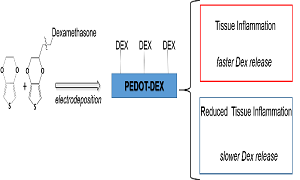
Stefano Carli
Italian Institute of Technology, Italy
Title: New poly(3,4-ethylenedioxythiophene) coatings for neural recording and stimulation
Biography
Biography: Stefano Carli
Abstract
Statement of the Problem: The development of implantable neural microelectrodes has revolutionized the field of biomedical applications by enabling bidirectional communication with the nervous system at high resolution. Unfortunately, one of the main concerns related to chronically implanted neural microelectrodes is related to the adverse reaction of the surrounding tissue, which is known to encapsulate the neural microelectrodes after few weeks post implantation, leading to significant worsening of recording/stimulation quality. Among various approaches aimed to minimize inflammatory reaction and gliosis while preserving the electrochemical integrity of microelectrodes, the possibility of delivering anti-inflammatory drugs from the surface of neural implants represents a challenging strategy. For this purpose, the conductive polymer poly(3,4-ethylenedioxythiophene) (PEDOT), is commonly electrodeposited onto the microelectrodes in conjunction with the negatively charged dexamethasone sodium phosphate (Dex-P). Following this methodology, the drug release can be promoted by applying a cathodic trigger that reduces PEDOT to its neutral state, while enabling the free diffusion of the drug. Unfortunately, the inclusion of Dex-P as a dopant has been reported to negatively affect both electrochemical properties and stability of PEDOT coatings.
Methodology & Theoretical Orientation: In this study, for the first time, the anti-inflammatory drug dexamethasone (Dex) was chemically anchored to the surface of electrodeposited PEDOT, thereby enabling the drug release upon the hydrolysis of the chemical bond between Dex and the PEDOT film. This approach would account for a self-adjusting release system that promotes the delivery of the drug by local changes in the biologic environment.
Conclusion & Significance: The big challenge of this study was to realize self-adjusting release of drugs by neural implants, as a consequence of post implantation inflammatory biological triggers. Here we found that the covalent bond between Dex and PEDOT composite coatings can account for a biologically controlled drug release system.

